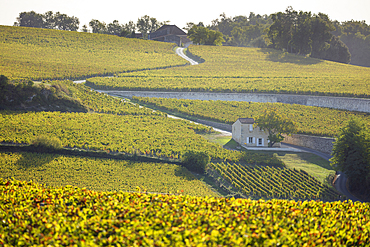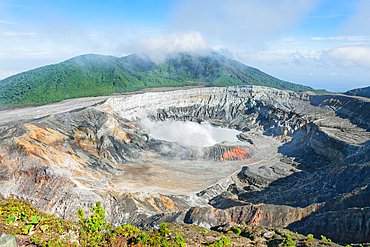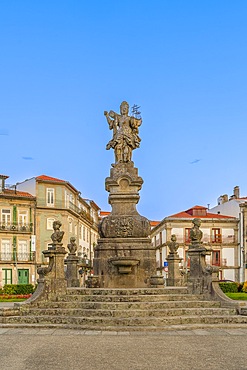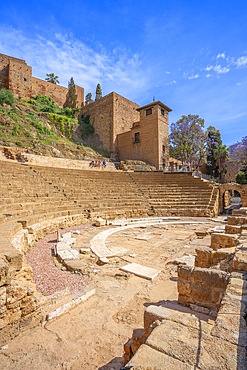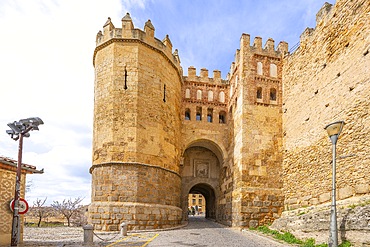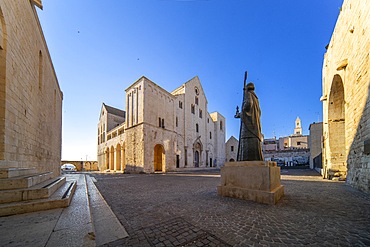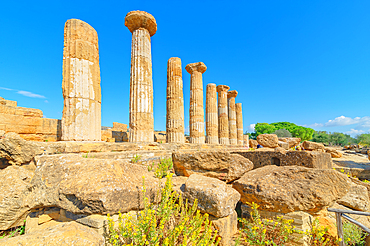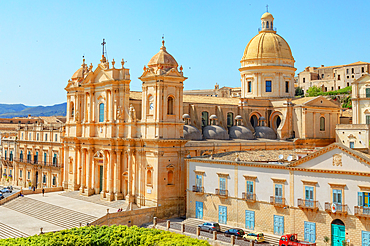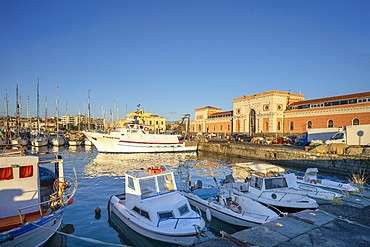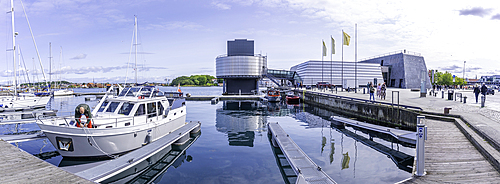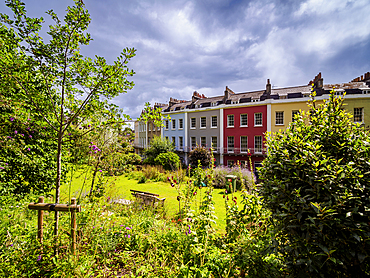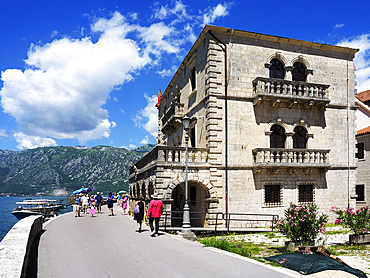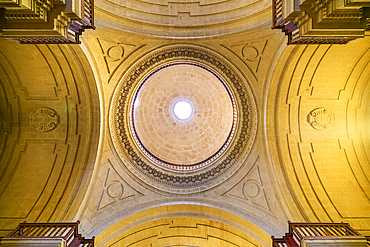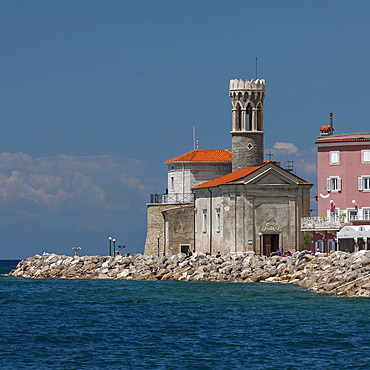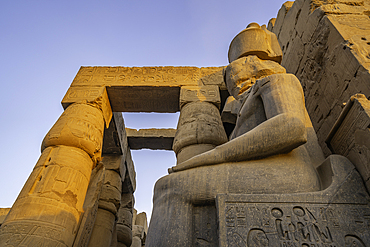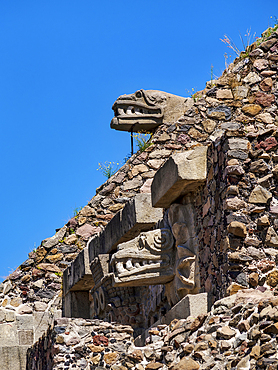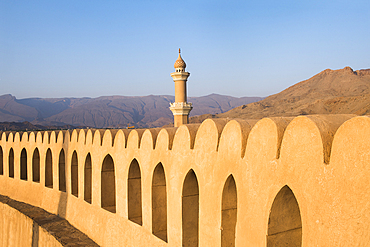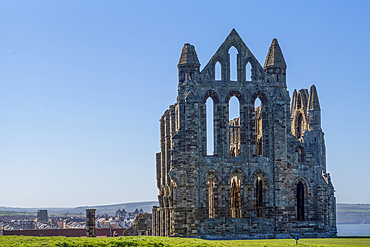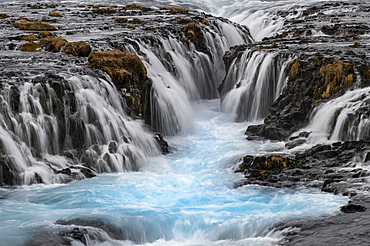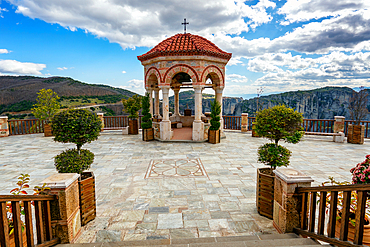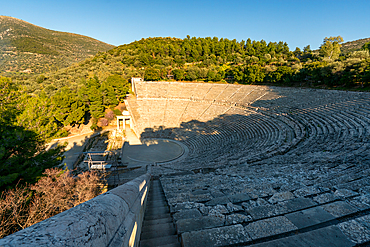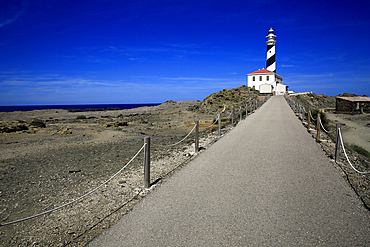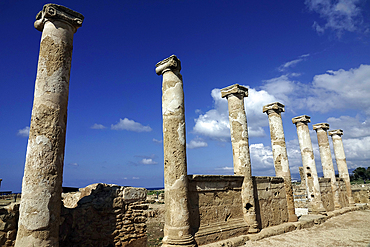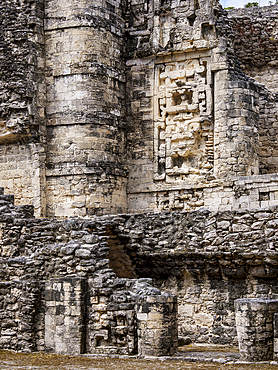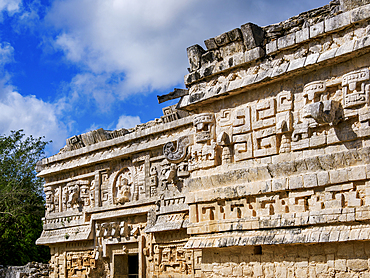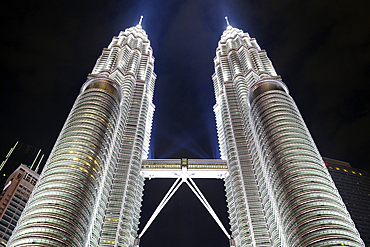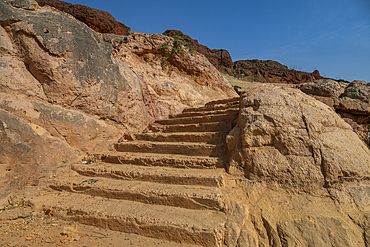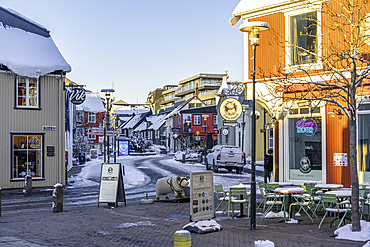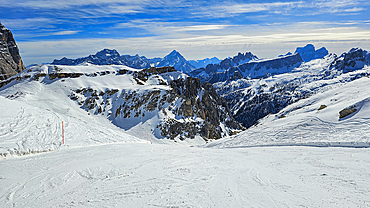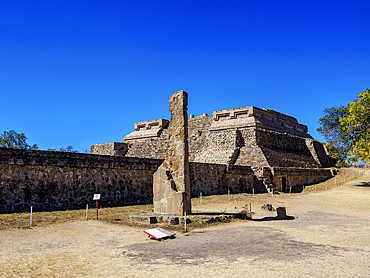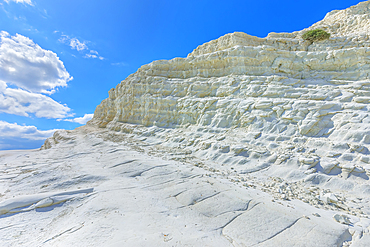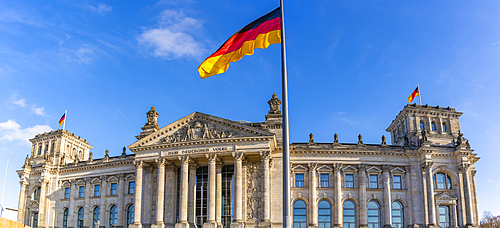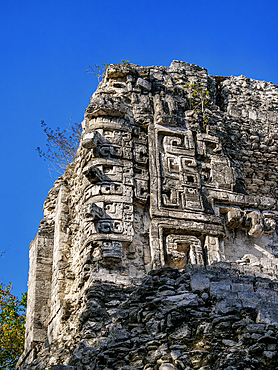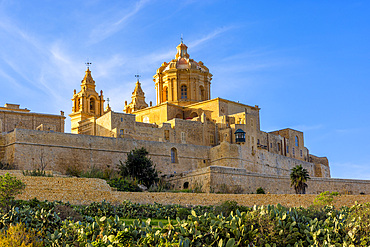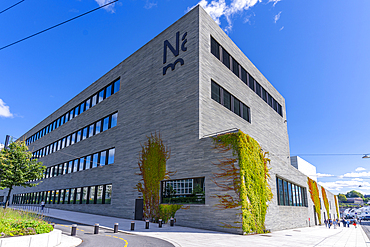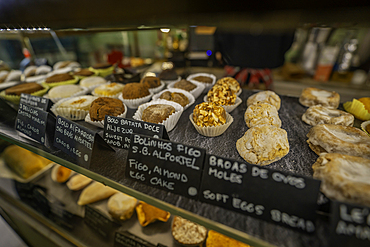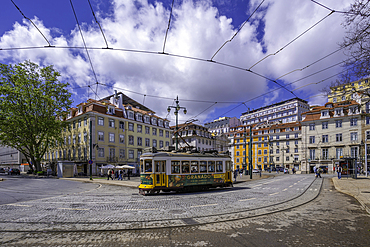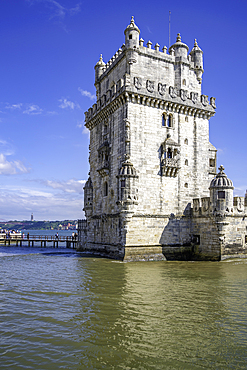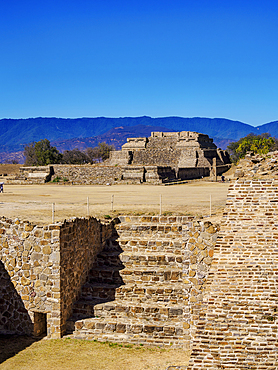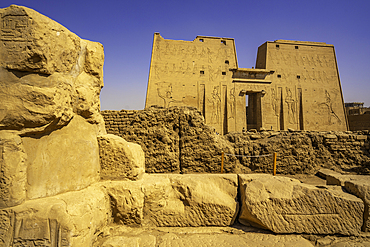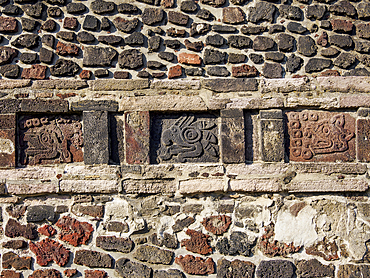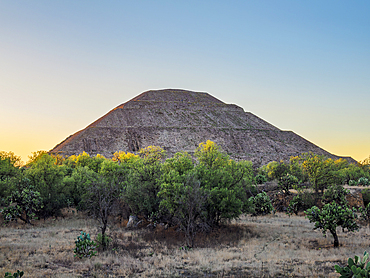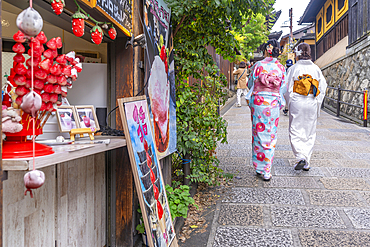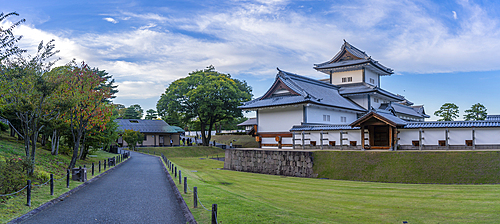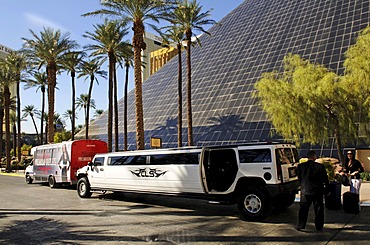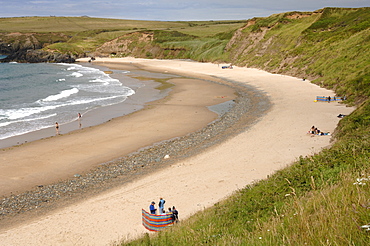Results
68 results found
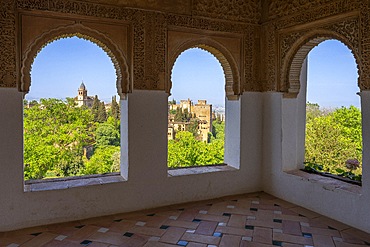
Generalife Palace, Generalife Gardens, Islamic and Mudejar architecture, Alhambra, UNESCO, Granada, Andalusia, Spain

Top view of the village of Ericeira with the ocean waves crashing on the touristic sandy beach, Mafra, Portugal, Europe
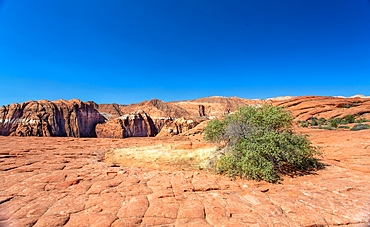
Petrified sand dunes, White Canyon State Park, Red Cliffs Desert Reserve near St. George, Utah, United States of America
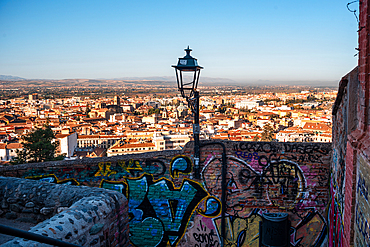
Walls and lantern in front of the skyline of Granada at sunrise. Albaicin, Granada, Andalucia, Spain
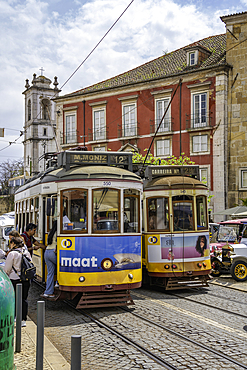
View of vintage trams and colourful architecture in Alfama, Alfama District, Lisbon, Portugal, Europe
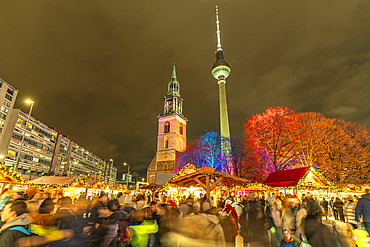
View of Berlin TV Tower, St. Mary's Church and Christmas market in Wasserkaskaden at dusk, Mitte, Berlin, Germany
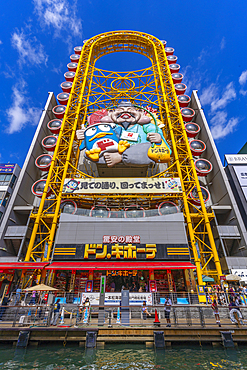
View of Ebisu Tower Ferris Wheel in Dotonbori, vibrant entertainment district near the river, Osaka, Honshu, Japan
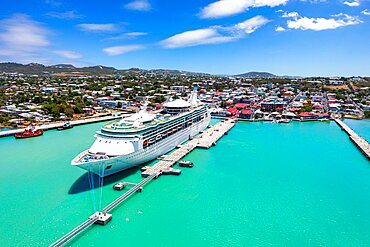
Aerial view of cruise ship moored in the touristic port of St John???s, Antigua, Leeward Islands, Caribbean, West indies
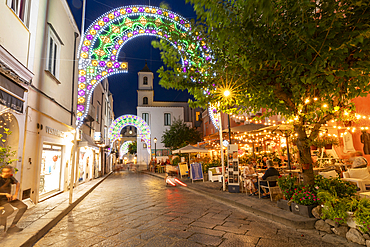
View of Church of the Holy Spirit and restaurant on Via Luigi Mazzella at night, Port of Ischia, Island of Ischia, Campania, Italy, Europe

View of Jerónimos Monastery (Monastery of the Hieronymites) on a sunny day, Lisbon, Portugal, Europe
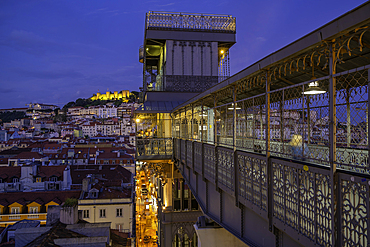
View of Lisbon Castle and Santa Justa Lift from Carmo Archaeological Museum during golden hour, Lisbon, Portugal, Europe
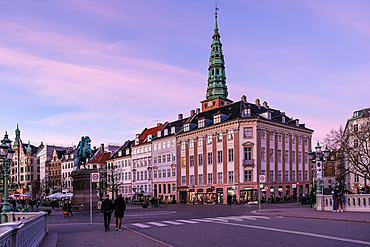
Copenhagen, Denmark ��� View of Hv?jbro Plads, a historic square near the canal, known for its equestrian statue of Bishop Absalon and its vibrant role in the city���s cultural and commercial life.
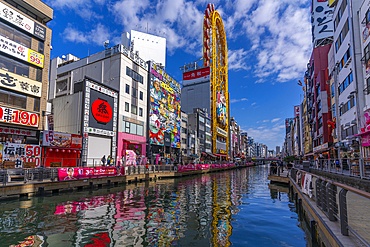
View of restaurants and Ebisu Tower Ferris Wheel in Dotonbori, vibrant entertainment district near the river, Osaka, Honshu, Japan
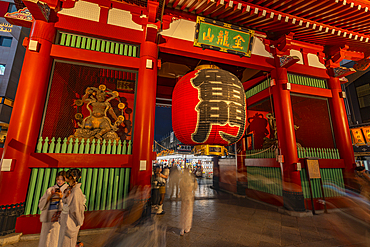
View of Kaminarimon Gate, entrance to Senso-ji Temple at night, Asakusa, Taito City, Tokyo, Honshu, Japan
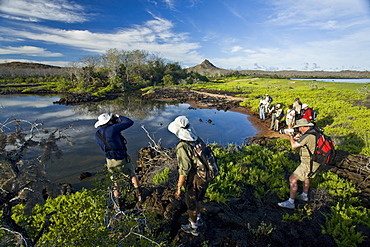
Sunrise light on a brackish lagoon near Cerro Dragon (Dragon hill) on Santa Cruz Island in the Galapagos Island Archipeligo, Ecuador. Pacific Ocean.
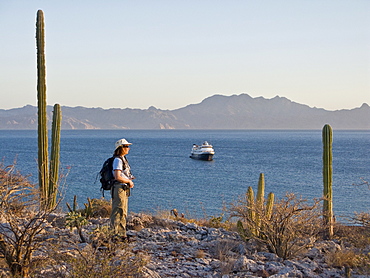
Lindblad expedition leader Sue Perrin viewing the Lindblad expedition ship National Geographic Sea Bird from atop Isla Monseratte in the Gulf of California (Sea of Cortez) and the Baja Peninsula, Mexico.
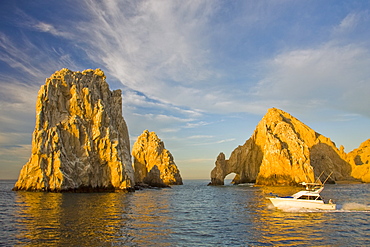
A view of Land's End (finisterra in Spanish), the famous granite arch formation just outside the harbor in Cabo San Lucas, Baja California Sur, Mexico.
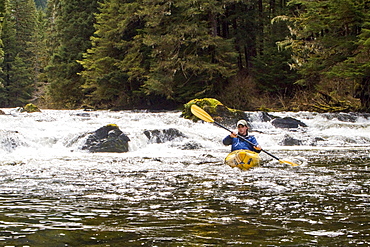
Lindblad Expedition guests and staff from the National Geographic Sea Lion kayaking in Southeast Alaska, USA in the late spring.

Views of Grand Pacific glacier from on board the Lindblad Expedition vessel National Geographic Sea Lion in Glacier Bay National Park, Southeast Alaska, USA. Pacific Ocean.
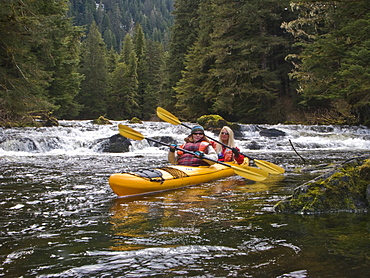
Lindblad Expedition guests and staff from the National Geographic Sea Lion kayaking in Southeast Alaska, USA in the late spring.
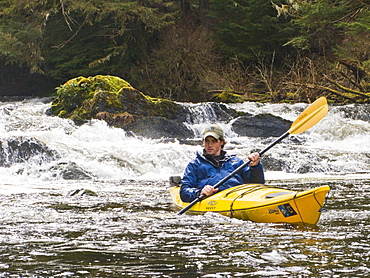
Lindblad Expedition guests and staff from the National Geographic Sea Lion kayaking in Southeast Alaska, USA in the late spring.
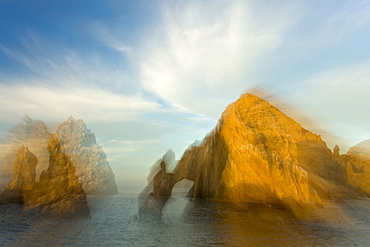
A view of Land's End (finisterra in Spanish), the famous granite arch formation just outside the harbor in Cabo San Lucas, Baja California Sur, Mexico.

Lindblad Expedition guests and staff from the National Geographic Sea Lion kayaking in Southeast Alaska, USA in the late spring.

Lindblad Expedition guests and staff from the National Geographic Sea Lion kayaking in Southeast Alaska, USA in the late spring.
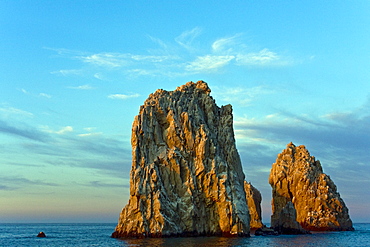
A view of Land's End (finisterra in Spanish), the famous granite arch formation just outside the harbor in Cabo San Lucas, Baja California Sur, Mexico.
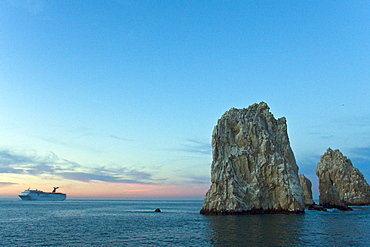
A view of Land's End (finisterra in Spanish), the famous granite arch formation just outside the harbor in Cabo San Lucas, Baja California Sur, Mexico.
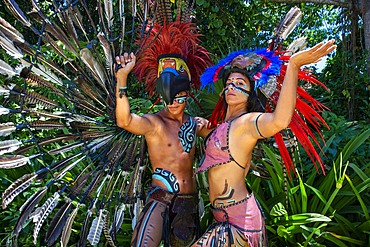
Mexican aztec dress gods at Grand Palladium White Sand Resort and Spa in Riviera Maya, Yucatan Peninsula, Quintana Roo, Caribbean Coast, Mexico.
Aztec clothing was generally loose fitting and did not completely cover the body. When the Spanish arrived in Mexico, the people were surprised to see them in their full armour, with only their faces exposed.
Aztec clothes were generally made of cotton (which was imported) or ayate fiber, made from the Maguey Cactus (also called the Century Plant or American Aloe). Women would weave the fibers into clothing, a task girls were taught as young teenagers. Because of their vast trading network, the Aztecs were able to make use of a beautiful array of dyes, creating the brilliant
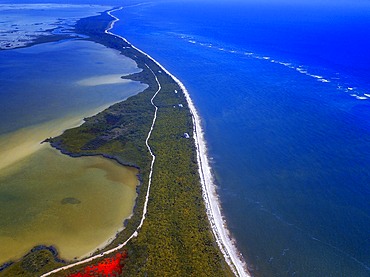
Aerial view of Punta Allen Sian Ka'an Reserve, Yucatan Peninsula, Mexico. Red lagoon near Boca Paila Bridge.
In the language of the Mayan peoples who once inhabited this region, Sian Ka'an means Origin of the Sky. Located on the east coast of the Yucatán peninsula, this biosphere reserve contains tropical forests, mangroves and marshes, as well as a large marine section intersected by a barrier reef. It provides a habitat for a remarkably rich flora and a fauna comprising more than 300 species of birds, as well as a large number of the region's characteristic terrestrial vertebrates, which cohabit in the diverse environment formed by its complex hydrological system.
Along its roughly 120 kilometres of coastline, the property covers over 400,000 hectares of land ranging from sea level to only ten m.a.s.l. The property boasts diverse tropical forests, palm savannah, one of the most pristine wetlands in the region, lagoons, extensive mangrove stands, as well as sandy beaches and dunes. The 120,000 hectares of marine area protect a valuable part of the Mesoamerican Barrier Reef and seagrass beds in the shallow bays. The lush green of the forests and the many shades of blue of the lagoons and the Caribbean Sea under a wide sky offer fascinating visual impressions.

Aerial views of El Castillo and the Ruins of the Mayan temple grounds at Tulum, Quintana Roo, Yucatan, Mexico. Tulum is the site of a pre-Columbian Mayan walled city which served as a major port for Coba, in the Mexican state of Quintana Roo. The ruins are situated on 12 meter 39 ft tall cliffs along the east coast of the Yucatán Peninsula on the Caribbean Sea in the state of Quintana Roo, Mexico. Tulum was one of the last cities built and inhabited by the Maya; it was at its height between the 13th and 15th centuries and managed to survive about 70 years after the Spanish began occupying Mexico. Old World diseases brought by the Spanish settlers appear to have resulted in very high fatalities, disrupting the society, and eventually causing the city to be abandoned.
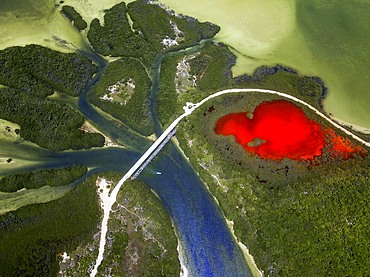
Aerial view of Punta Allen Sian Ka'an Reserve, Yucatan Peninsula, Mexico. Red lagoon near Boca Paila Bridge.
In the language of the Mayan peoples who once inhabited this region, Sian Ka'an means Origin of the Sky. Located on the east coast of the Yucatán peninsula, this biosphere reserve contains tropical forests, mangroves and marshes, as well as a large marine section intersected by a barrier reef. It provides a habitat for a remarkably rich flora and a fauna comprising more than 300 species of birds, as well as a large number of the region's characteristic terrestrial vertebrates, which cohabit in the diverse environment formed by its complex hydrological system.
Along its roughly 120 kilometres of coastline, the property covers over 400,000 hectares of land ranging from sea level to only ten m.a.s.l. The property boasts diverse tropical forests, palm savannah, one of the most pristine wetlands in the region, lagoons, extensive mangrove stands, as well as sandy beaches and dunes. The 120,000 hectares of marine area protect a valuable part of the Mesoamerican Barrier Reef and seagrass beds in the shallow bays. The lush green of the forests and the many shades of blue of the lagoons and the Caribbean Sea under a wide sky offer fascinating visual impressions.
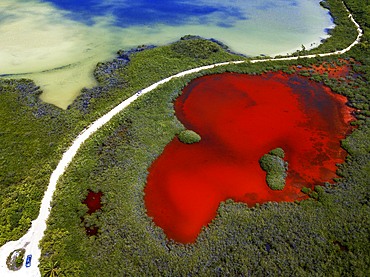
Aerial view of Punta Allen Sian Ka'an Reserve, Yucatan Peninsula, Mexico. Red lagoon near Boca Paila Bridge.
In the language of the Mayan peoples who once inhabited this region, Sian Ka'an means Origin of the Sky. Located on the east coast of the Yucatán peninsula, this biosphere reserve contains tropical forests, mangroves and marshes, as well as a large marine section intersected by a barrier reef. It provides a habitat for a remarkably rich flora and a fauna comprising more than 300 species of birds, as well as a large number of the region's characteristic terrestrial vertebrates, which cohabit in the diverse environment formed by its complex hydrological system.
Along its roughly 120 kilometres of coastline, the property covers over 400,000 hectares of land ranging from sea level to only ten m.a.s.l. The property boasts diverse tropical forests, palm savannah, one of the most pristine wetlands in the region, lagoons, extensive mangrove stands, as well as sandy beaches and dunes. The 120,000 hectares of marine area protect a valuable part of the Mesoamerican Barrier Reef and seagrass beds in the shallow bays. The lush green of the forests and the many shades of blue of the lagoons and the Caribbean Sea under a wide sky offer fascinating visual impressions.
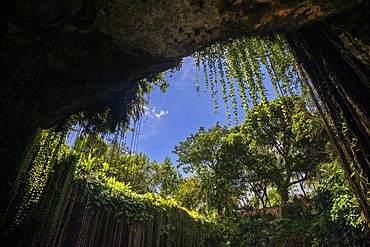
Cenote Ik Kil in Yucatan, Mexico, a natural pit, or sinkhole near Chichen Itza. Yucatan Peninsula, Quintana Roo, Mexico. Ik Kil was sacred to the Mayans who used this cenote for both relaxation and ritual services centuries ago.
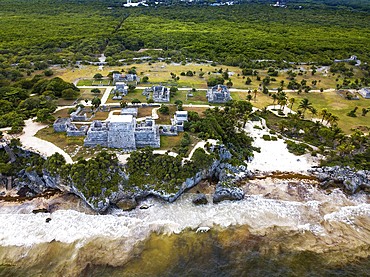
Aerial views of El Castillo and the Ruins of the Mayan temple grounds at Tulum, Quintana Roo, Yucatan, Mexico. Tulum is the site of a pre-Columbian Mayan walled city which served as a major port for Coba, in the Mexican state of Quintana Roo. The ruins are situated on 12 meter 39 ft tall cliffs along the east coast of the Yucatán Peninsula on the Caribbean Sea in the state of Quintana Roo, Mexico. Tulum was one of the last cities built and inhabited by the Maya; it was at its height between the 13th and 15th centuries and managed to survive about 70 years after the Spanish began occupying Mexico. Old World diseases brought by the Spanish settlers appear to have resulted in very high fatalities, disrupting the society, and eventually causing the city to be abandoned.
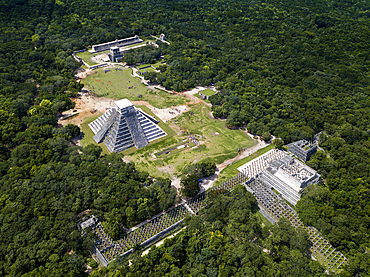
Aerial view of Mayan Ruin of Chichen Itza Archaeological Site Yucatan Peninsula, Quintana Roo, Caribbean Coast, Mexico
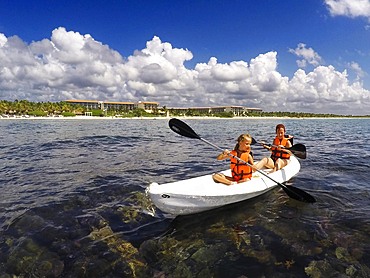
Kayakking in front of the beach of Grand Palladium White Sand Resort and Spa in Riviera Maya, Yucatan Peninsula, Quintana Roo, Caribbean Coast, Mexico
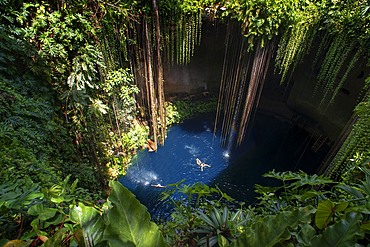
Swimming at Cenote Ik Kil in Yucatan, Mexico, a natural pit, or sinkhole near Chichen Itza. Yucatan Peninsula, Quintana Roo, Mexico. Ik Kil was sacred to the Mayans who used this cenote for both relaxation and ritual services centuries ago.
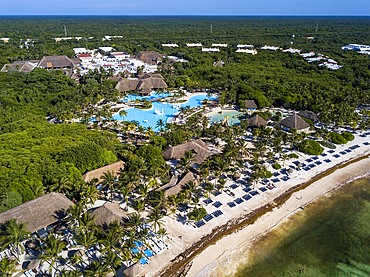
Aerial view of Grand Palladium White Sand Resort and Spa in Riviera Maya, Yucatan Peninsula, Quintana Roo, Caribbean Coast, Mexico
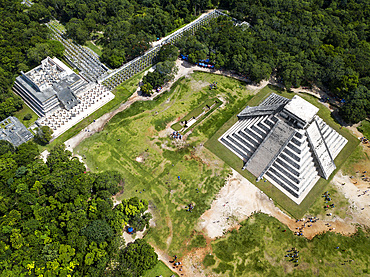
Aerial view of Mayan Ruin of Chichen Itza Archaeological Site Yucatan Peninsula, Quintana Roo, Caribbean Coast, Mexico

Estructura 8I-13 El Castillo at Chunyaxche Muyil Maya ruins, rainforest near Tulum, Yucatan Peninsula, Quintana Roo, Mexico
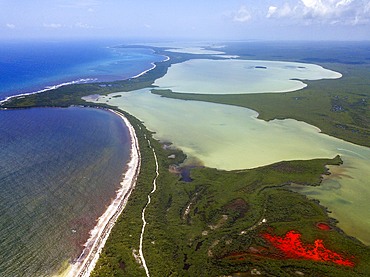
Aerial view of Punta Allen Sian Ka'an Reserve, Yucatan Peninsula, Mexico. Red lagoon near Boca Paila Bridge.
In the language of the Mayan peoples who once inhabited this region, Sian Ka'an means Origin of the Sky. Located on the east coast of the Yucatán peninsula, this biosphere reserve contains tropical forests, mangroves and marshes, as well as a large marine section intersected by a barrier reef. It provides a habitat for a remarkably rich flora and a fauna comprising more than 300 species of birds, as well as a large number of the region's characteristic terrestrial vertebrates, which cohabit in the diverse environment formed by its complex hydrological system.
Along its roughly 120 kilometres of coastline, the property covers over 400,000 hectares of land ranging from sea level to only ten m.a.s.l. The property boasts diverse tropical forests, palm savannah, one of the most pristine wetlands in the region, lagoons, extensive mangrove stands, as well as sandy beaches and dunes. The 120,000 hectares of marine area protect a valuable part of the Mesoamerican Barrier Reef and seagrass beds in the shallow bays. The lush green of the forests and the many shades of blue of the lagoons and the Caribbean Sea under a wide sky offer fascinating visual impressions.
